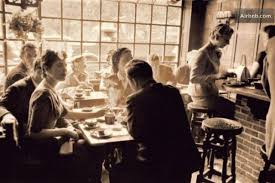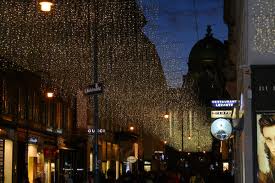
The Austrian actor Erich von Stroheim once said, “If I speak of Vienna, it must be in the past tense, as a man speaks of a woman he has loved and who is dead.”
In truth, however, based on what I observed during this visit, Vienna is very much alive. It is Mr. von Stroheim who is, in fact, dead.
Long thought of as the gateway to Eastern Europe, a land of spies and sachertorte, Vienna has to be, for Americans at least, one of Europe’s most underappreciated cities. It took me just an afternoon to figure out what I love about this place. Vienna is like someone you meet and fall in love with slowly. But you quickly discover that underneath her charm and elegance there is this highly evolved intelligence. At first it scares you just a bit. Are you up to it? Will it find you out?
But in the end, you rationalize that it really is always better to fall in love with someone with a brain. There are challenges, yes, but oh the rewards.
My taxi driver from the airport was not wearing a tie. He had not, in fact, shaved. He was, however, listening to Brahms as the BMW cab whisked me to the Hotel Bristol in the city center.
That night, walking the inner ring of the city center, not far from the Opera House, I heard the most beautiful music coming from somewhere ahead of me.
A moment or two later, I saw a small crowd gathered under the portico of the Bally store, where a violinist accompanied a man with the most beautiful contralto voice I had ever heard.
This is a city of absolutely stupendous buildings. They form caverns as I walk in the frigid air of a December night. But the music keeps me warm, and always as I look up, I see sculpted angels atop facades seeing me safely on my path.
The oldest settlement in Vienna dates from the Stone Age. Later came Vindobona, a small Celtic settlement that in the first century became a Roman encampment.
In 1945, Vienna was divided into four zones, and Austria itself was not fully guaranteed its freedom and independence until the signing of the State Treaty in 1955.
This history, including the massive bombing of World War II, makes Vienna’s intellectual renaissance all the more amazing.
I ponder this and take notes while taking kaffee und kuchen at the city’s famed pastry palace, Demel, on Kohnmarkt. From my table I can see the bakers at work on their particular form of art.

Today, about 1.6 million people live in 853,000 registered apartments and private homes. Almost 50% of the city is green space, parks and small bits of forest. That makes Vienna the greenest city in Europe.
Vienna is a city that answers the question one hears in our profession continually: “I don’t care about getting a tan, and I don’t consume drinks with umbrellas. I am not brain dead, and I crave culture and sophistication. Where can I go?”
Get thee to Vienna. The Austrian actor and director MaxReinhardt was more accurate than von Stroheim in his appraisal of the city. “God created the world,” he said, “but man created a second world for himself: art.” His canvas is Vienna. I thought I might give you a listing of some of my favorite museums. But just to be fair to other cities whose sense of culture is not as sublime, let me tie one hand behind Vienna’s back by listing only a sampling of the museums that happen to begin with the letter “G.”
There is, for instance, the Geldmuseum for folks with an interest in coins and numismatics. I love the Gemaldegalerie der Akademie, which features works by Hieronymus Bosch. Then there is the Globenmuseum, featuring a collection of Baroque globes.
Those are just a few of the “G” collections. In fact, Vienna has more museums and concert halls, and people who appreciate them, than any other city on Earth.
Vienna is the antidote for those seeking a vacation that will be as nourishing for the brain as it is for the body.

